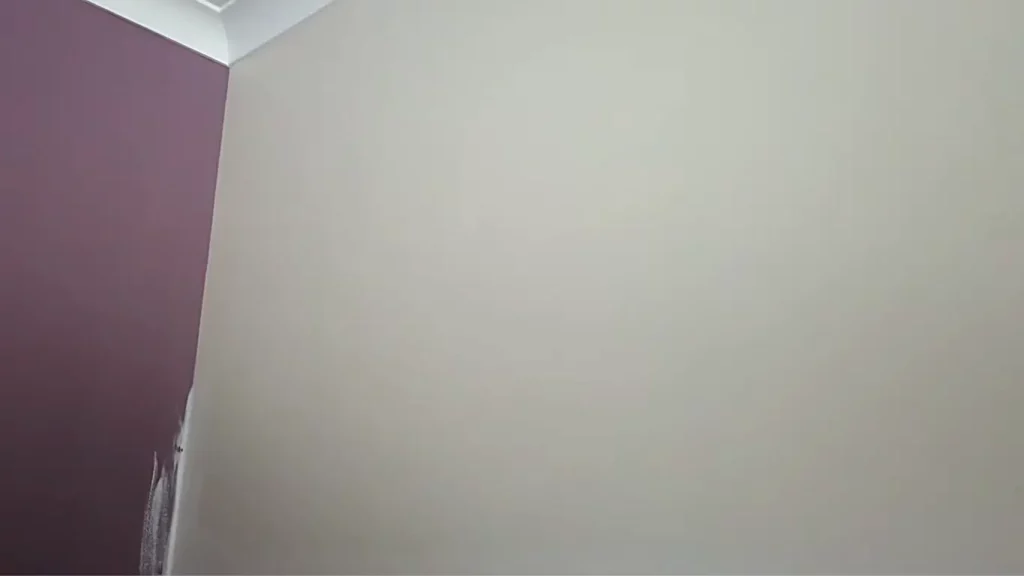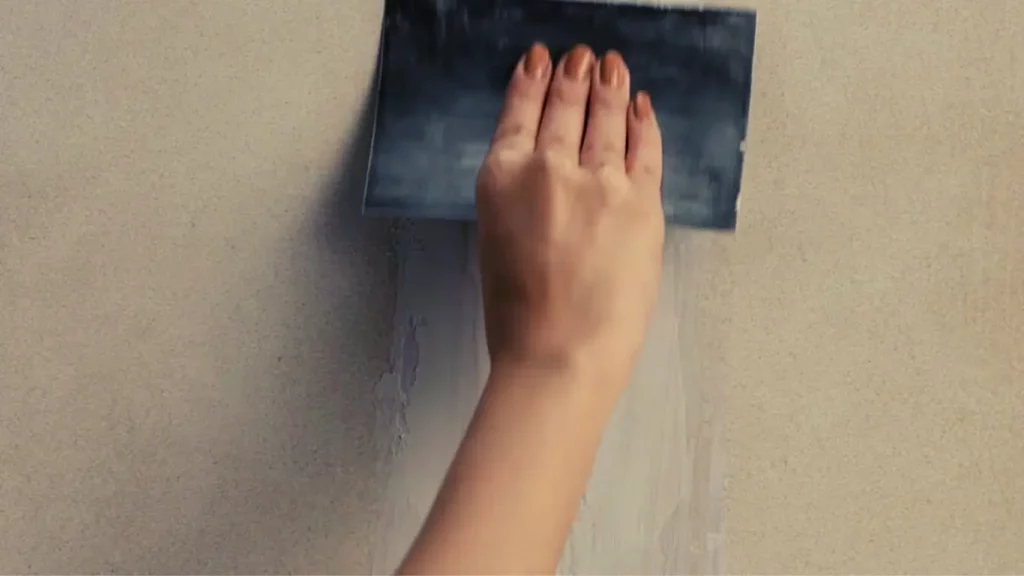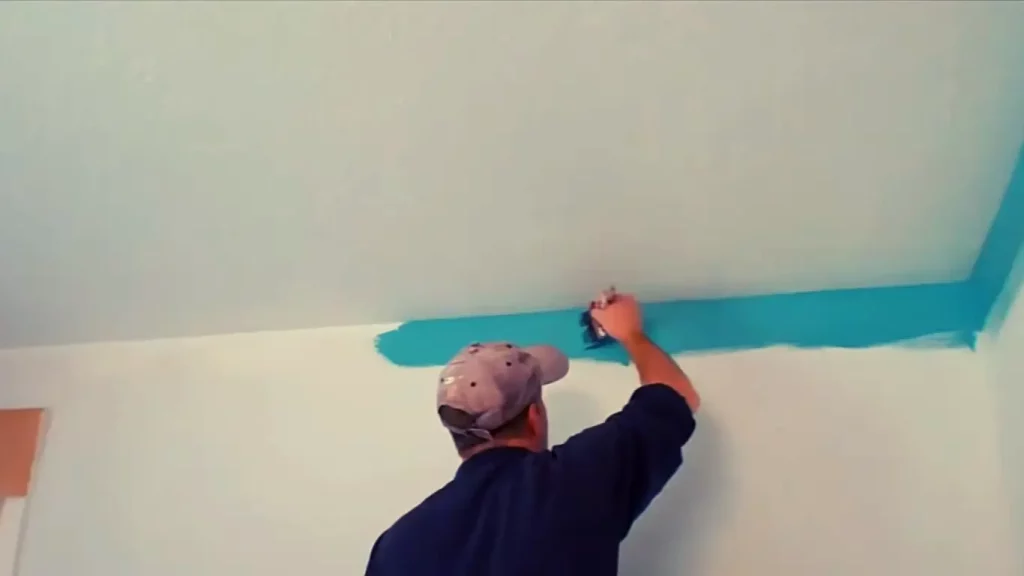Have you ever wanted to know whether or not a painted wall is a porous surface? It’s an important question to consider if you plan to paint or wallpaper your walls, as it will determine the type of paint and adhesive you use.
When it comes to painted walls, it’s tempting to think that they’re impervious to dirt and stains. But the truth is that all surfaces are porous to some degree, including paint. This means that over time, painted walls will start to absorb dirt and grime, making them look dull and dingy.
So, to answer the topic at hand, let’s look at what makes something porous and how that affects the painted wall.

What is Porosity?
Porosity is the measure of how much air can pass through a material. A porous material has many small holes that allow air, gas, and liquids to pass through it. Other materials are non-porous; this means they have very few small holes and don’t allow anything to pass through them.
Is Paint Porous?
The paint is generally considered non-porous because it is applied in an even layer with no gaps or holes for air or liquid to pass through. Some paints may be slightly porous due to their composition and may allow some gases to escape over time. Generally speaking, though, paint does not offer any porosity and should be treated as non-porous when selecting adhesives or other coatings.
What About The Wall Underneath?
So now we know that paint itself is not porous, but what about the wall underneath? That depends on what kind of wall it is. For example, brick walls are generally considered quite porous because they have many tiny pores that allow air, gas, and liquid to pass through quite easily. Plaster walls are much less porous as they are made up of dense particles that do not allow much air or liquid flow.
Exploring the Porosity of Painted Surfaces
Have you ever wondered why some painted surfaces are more porous than others? Porous surfaces can be difficult to clean and maintain, so understanding why this occurs is important. Let’s dive deeper into the science behind painted surfaces and why some are more porous than others.
The Science Behind Paint Porosity
Paint porosity is determined by a combination of factors, including surface preparation, paint type, and application technique. The degree of porosity is also affected by environmental conditions, such as temperature and humidity, and the quality of materials used to create the paint mix.
Surface Preparation
To get a good paint finish on any surface, it must first be properly prepared. This includes cleaning off dirt, dust, rust, and other debris from the surface before painting. A smooth, uniform surface helps create a good bond between the primer and the painted surface. If there is any unevenness or pits on the surface that isn’t addressed before painting begins, then these can be filled in with filler or putty before painting.
Paint Type & Application Technique
Acrylic latex paint which is commonly used for interior and exterior is more porous than other types of paint. For non-porous paint, you can choose gloss alkyd paint. Applying multiple thin coats of paint instead of one thick coat will also help reduce porosity because each layer of paint seals off any underlying gaps from previous layers.
Environmental Conditions
Temperature and humidity levels are important in determining how much moisture is present in the air when the painting occurs. High humidity means that there is more moisture present in the air, which can lead to excessive porosity if not accounted for before painting. Temperature directly impacts how long it takes for paint to dry, which can affect its ultimate level of porosity as well.
How To Paint a Porous Surface the Right Way?
Painting porous surfaces can be a tricky task. It is important to understand the different types of paint and what combination of paint and primer will work best for your surface. From the beginning of this blog post, we provided information, and here now will explain the steps necessary to paint a porous surface properly, so you can get the job done right.
Step 01: Choose the Right Paint and Primer
The type of paint and primer you use on a porous surface is very important. You want to choose a paint with good adhesion properties, such as an acrylic or latex-based paint. A good water-based primer should also be used, as this will help prevent any moisture damage from occurring.
Step 02: Prepare Your Surface
Before you begin painting, you must ensure your surface is properly prepared. Cleaning off any dust or debris from your porous surface is essential for the paint to adhere correctly. You can use a damp cloth or sponge to do this, or even just a vacuum cleaner if it is easier for you. Make sure that all areas are completely dry before attempting to start painting.

Step 03: Apply a Coat of Primer
Once your surface has been cleaned and prepped, it’s time to apply the first coat of primer. This helps seal in any cracks that may have occurred when cleaning your surface, as well as providing an even base layer for your final coat of paint. Allow this coat of primer to dry completely before applying another one it’s important not to rush this step.
Step 04: Paint Your Surface
Now it’s time for the fun part of painting your surface. Start by applying an even coat of paint over the entire area that needs to be covered. Make sure that each stroke goes in one direction only this will help ensure an even finish and reduce brush strokes once everything has dried out.
Allow this first layer of paint to dry before adding another one; usually, two coats are enough, but depending on how dark/light you want your finished product, more coats may be necessary. Once everything has dried out completely, take a step back and admire your newly painted porous surface.

The Benefits of Painting a Porous Surface
Painting porous surfaces is a job that many people do not think twice about. It is an important task that can enhance the look and feel of any room. Before painting a porous surface, you should take the time to understand what makes it so special and why it requires special attention. Painting a porous surface offers many advantages, including increased durability and protection from weathering and corrosion.
Painting can provide an aesthetic benefit; it can make the material more visually appealing by providing color or texture. Furthermore, painting helps reduce the amount of dirt and debris that accumulates on the material’s surface, making it easier to clean. Finally, painting adds another layer of insulation to prevent heat transfer between the material and its environment. Let’s look at how a porous surface works before and after painting.
Preparation Tips
Before painting a porous surface, it’s important to prepare the area properly. You should start by cleaning off any dirt that may be present on the surface using soap and water or an appropriate cleaner. Once cleaned off, you should sand down any rough areas with medium grit sandpaper before moving on to finer grits until you achieve a smooth finish.
Lastly, use a damp cloth to remove any dust particles left over from sanding before applying your paint. Rough surfaces are difficult for paint to adhere to, so you must take your time in preparing the area beforehand.
Application Tips
Once your surface is prepared for painting, you can apply your chosen paint product. If possible, try to choose a product specifically designed for porous surfaces, as these will typically offer superior adhesion and coverage results than standard paints do when applied onto porous surfaces such as brick or concrete block walls.
It’s also important that you apply several thin coats rather than one thick coat; this will help ensure even coverage of the entire area as well as optimal adhesion of the paint product onto your material’s surface. Finally, if applicable, be sure to use painter’s tape around windowsills or other areas where you don’t want paint applied. This will help ensure clean lines when finished.
Conclusion
While the paint isn’t considered a porous surface, the underlying wall can be either more or less porous depending on its composition. Painting porous surfaces can seem daunting at first glance, but with some patience and careful preparation, it is quite straightforward and rewarding too.
When deciding on which type of paint to use for your walls, always remember that certain paints will only stick effectively on certain types of surfaces, so make sure you take into consideration how porous your walls are before making any decisions.
With these simple steps outlined above, you now have all the information necessary for getting started on painting any porous surface in your house or business premises. So, what are you waiting for? Get creative and show off those beautiful new walls today.

S. Pushon is a paint expert, self-taught artist, and currently working as an adviser in the paint industry as a Quality Improvement and Development Assistant.
An artist by heart, he draws remarkable art pieces and as a professional paint industry individual, he seeks the insight and shares with enthusiasts. Read more…
